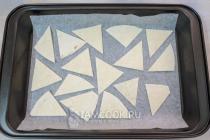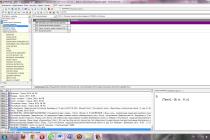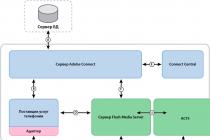A router is a convenient solution for building a local and wireless network, which allows you to simultaneously access the Internet from several devices. However, in order to configure the router, you first need to install it correctly and go to the web interface, where the main parameters of the equipment operation are indicated.
Equipment connection
Before entering the router settings, you need to properly install the equipment. You will need:
- Router.
- Network cable.
- Network card on the computer.
Any user can handle the installation of a router - the main thing is to carefully examine the ports and figure out what they are for. Explanatory labels and different colors of connectors will help in this.
- A cable is inserted into the WAN / Line / Internet port, which the provider has led into the room (usually it is blue).
- One of the LAN ports (mostly yellow) is installed network cable that comes with the router. The other end of the patch cord connects to the computer's network card.
- The power cable is plugged into the appropriate connector.
After all the wires are in place, press the power button. If everything is done correctly, several indicators on the router will light up: power, network connection and computer connection.
Configuring the router in the system
To open the router interface, you need to set up a network connection. Usually the necessary parameters are set automatically, but it will be useful to check their correctness.

These are standard settings that allow the router using a DHCP server to independently assign an address to a connected device (a computer in this case).
Login to the interface
After connecting and configuring the equipment, you can proceed to resolving the issue of how to log into the router. Almost on all routers, the interface address, login and password are indicated on the label located on the bottom of the device. 
If there is no sticker, then you can view the address to be displayed in the browser of the router's web interface using the software:
- Open the "Network and Sharing Center".
- Proceed to change adapter parameters.
- Double click on the local area connection icon.
- Click Details and look at the Default Gateway value.

If you yourself changed the username and password, but cannot remember the new values, then use the Reset button on the router to reset its settings to the factory settings. After resetting the parameters, the credentials will become the default - admin / admin.
It is not necessary to look at the address of the router. Most manufacturers use the same address, so the startup order of the router interface different models not much different.
For example, TP-Link and D-Link routers use the IP address 192.168.0.1. After entering this value, an authorization window appears in the address bar of the browser - you need to register your login and password in it. For some models of D-Link Dir routers, you only need to specify a login, the password string can be left blank. 
Have Asus routers and Netgear is set to the default address 192.168.1.1. The login and password are also usually standard - admin / admin. But there may be options: for example, for a NETGEAR WGR614 router, the login will be “admin”, and the password will be “password”.
For Huawei routers, the login information is slightly different from the usual values. The address for entering the interface is 192.168.100.1. The login and password are also not quite standard - root and admin, respectively. Some models have even more complex authorization pairs. 
Routers Zyxel Keenetic have an easy-to-remember address my.keenetic.net. Alternatively, the standard address 192.168.1.1 is used. The login will be the word "admin", and the password for the standard settings is 1234.
It seems that you can get confused, but in reality everything is simple. In 90% of cases, the address will be 192.168.0.1. or 192.168.1.1, and the pair for authorization is admin / admin. If these values do not allow you to open the web interface, then carefully read the instructions - the address, username and password are always indicated there.
Possible login errors
If you go to the router settings using automatic settings does not work, then try setting the login parameters manually using the router's IP address.

Knowing the IP address of the router, you can manually specify the TCP / IPv4 parameters:

To understand what values you need to specify, let's take the IP address of the router - for example, 192.168.0.1. Based on this address, fill in the lines as follows:
- The IP address is 192.168.0.2 (the last digit must be in the range 2 to 254).
- Subnet mask - 255.255.255.0 (always remains unchanged).
- The main gateway is 192.168.0.1 (the address of the router is indicated here).
- The preferred DNS is 192.168.0.1 (the address of the router is also written).
With such settings, the problem of launching the router's web interface through a browser should be resolved. Then you just have to configure the Internet and create wireless connection, to Wi-Fi router began to perform its functions of providing constant access to the network from different devices.
D-Link routers are quite popular. Their line of models is quite long. There are quite budgetary D-links, and there are those with super characteristics. Whatever device a person buys from this company, one cannot do without initial installation and debugging, so you need to know how to enter D-Link settings.
Literally in every article you have to answer the question of how to get into the router settings. It's actually quite simple.
Installing the device
The first thing to start with is the installation. It lies in the fact that before entering the settings of the D-Link router, the device first needs to find a suitable place, so as not to transfer it a million times later. What you need to pay attention to when choosing a place:
- The location should be close to the nearest desktop computer so that you can connect over the LAN at any time. And it is better that this connection be on an ongoing basis. Or you just need to have a long network cable.
- The place should be at approximately the same distance from all the distant walls and corners of the house or apartment. Even if there are antennas, it often happens that the signal does not work the same everywhere. Therefore, it is worth paying attention to this nuance.
- The place where the router will be located should be close to the Internet cable. This is the one provided by the ISP or some private company. If there is an ordinary network wire, then this is half the trouble, because you can always buy a longer wire. And if a non-standard cable is used there, then lengthening it is problematic.
After the place is well or badly chosen, we need to insert all required cables in their places. This is nothing complicated, just connect the power, then connect the Internet to the corresponding WLAN port, and connect the PC to the router through one of the 4 LAN ports.
For D-Link, before going into the settings, you need to make sure that the computer is working correctly over the local network. The router has a number of different indicators for this.
Login to the control panel of the device
The step of logging into a D-Link router is very simple. To enter the settings you need:
- Go to the browser through the device that is connected to the router. If there is none, you need to connect it.
- After that, in the address bar, instead of the site, we write - "192.168.0.1" or "192.168.1.1". It is necessary to configure the modem; in the modem, this site is built-in, local. Which of these addresses will work - we check by trial. Take turns.

- When you get to the desired address, you will see a page to enter the settings, here we are asked for a username and password. They are standard for almost all routers with factory settings. Just enter the word "admin" in both the name field and the password field.

This completes the entrance to the panel, if you still cannot enter the control panel, it means that some item was performed incorrectly. Here you can change and customize everything, you just need to go to the menu and find the item of interest to us. In the menu we can see the state of certain characteristics.
The variety of devices for wireless Internet access has generated some terminological confusion. Rumor has dubbed all devices providing access to the network as routers. However, a router is synonymous only with a router - a device that is fundamentally different from a USB modem. Both of them allow you to access the Internet with a computer of one type or another. But, modems provide direct access to network resources, and routers are designed mainly to transmit a signal from a computer to mobile gadgets such as tablets, smartphones and laptops.
That is, if the provider's fiber-optic cable is already stretched to your apartment, then the router turns out to be the basis of the home wireless network. Any purchaser of a D-Link model device needs to know: how to enter the settings of a D-Link router and how to do it most simply and correctly.
With regard to USB modems, this portable device is designed to connect to the network of any one computer. These devices have one thing in common: their developers offer us the same way of configuring their products - through a special web interface. In this regard, some inexperienced users have questions and problems.
Errors in user actions
If you are so impatient and arrogant that you do not read the instructions when installing new equipment, then this story could very well happen to you:
- A person gets a router.
- Plugs all the wires into the necessary connectors (by analogy with how it is arranged with friends or at his work).
- Then it goes to the "Device Manager" in search of a new device and, of course, does not find it.
- Begins to rush in search of a driver for the router.
The situation described is rare, but not impossible. The first thing you should understand is that no drivers are relied on for the router. Unlike a modem, it is a completely independent unit from a computer, connected to it only by means of a network protocol. The situation is about the same as if you connected two computers to your home network with a cable. After all, to access the disk resources of one of the computers from another, you do not install any drivers, do you? Here - the same thing. The home router itself is small, simple computer... Although these epithets do not apply to Cisco routers installed by most providers. 
So, you need to use a different method to configure your router. What is it?
Network configuration
The creators of these network devices reasonably considered that as long as we are talking about network protocols transferring data, then messing with the development of window applications for configuring routers does not make any sense.
All this can be done through a web interface accessible through any browser. Some literate citizens also solved the opposite, in a sense, the problem - instead of web-access to the router, they turned it into a kind of hosting for their small sites. You can read about how this is done on the Internet. We are interested in more prosaic things.
 To access the settings, you need to open a browser on a computer connected to the D-Link router with a cable and type 192.168.1.1 in the address bar - this is the address of the device in your small home network... But before doing this, you need to configure the properties of the network card on the computer. After all, it is its connector that is connected to the "LAN" -connector of the router. Let's consider this issue in order.
To access the settings, you need to open a browser on a computer connected to the D-Link router with a cable and type 192.168.1.1 in the address bar - this is the address of the device in your small home network... But before doing this, you need to configure the properties of the network card on the computer. After all, it is its connector that is connected to the "LAN" -connector of the router. Let's consider this issue in order.
Configuring the network card
To enter the settings of the d link router via the web interface, we need to do the following:
- Right-click on the tray icon in the form of a small monitor.
- In the context menu that opens, select the position "Network Control Center and general access» .
- A window will open in which there is an inscription on the right "Change adapter parameters"- click on it with the mouse.
Lovers to work with command line, you can advise this alternative:
- Open the "Run" window with the standard key combination "Win" + "R".
- Type the command ncpa.cpl.
- Pressing "Enter" - this will give the same result as above.
As a result, a window will open « Network connections» with our connection icon. Click on the icon with the right mouse button and select the "Properties" menu item. In the window that opens, on the "Network" tab, there is a list with the configuration parameters of the network card. We need to enter the section Internet Protocol Version 4 (TCP / IPv4)... In the next window that opens, make the same settings as in the figure below.
The instructions will show the basic characteristics and help you configure the D-Link DIR-300 router, correct setting even such a budget router will help organize a full-fledged local area network, and with the purchase of a more powerful router, D-Link DIR-300 will expand the infrastructure, becoming an excellent addition to the new device.
Before configuring D-Link DIR-300, you need to connect the router as follows:
- The provider's cable coming from the dashboard at the entrance is connected to WAN port which may be called "INTERNET".
- The laptop is connected to one of the LAN ports of the router. By default, these 4 ports are equivalent if VLAN configuration has not been previously performed on this DIR-300.
Reset
When connecting a used D-Link DIR-300, problems often arise with both inoperative ports and with entering the GUI interface. To correctly configure such a router, you need to start by rolling back to the factory settings: press the RESET button, which is located on the case near the power connector, and hold it for 15 - 20 seconds.
The RESET button is soldered directly to printed circuit board D-Link DIR-300, therefore, you must not apply excessive force when pressing: this will disable the router!
Restoring factory settings will also help if the user settings of the router are lost: the previously saved D-Link DIR-300 configuration should be loaded only after rolling back to the initial settings.
A detailed description of how to restore the factory configuration is presented in
Computer settings
The computer from which the modem will be configured must receive its local address when the DIR-300 is powered on. To do this, you need to bring network card The PC is in automatic configuration acquisition mode.
1. Through the connection icon, which is located on the taskbar, you can go to the management of the OS network settings.

2. Then, go to the properties of the local connection.

3. In the TCP / IPv4 properties, check the "Automatic" checkboxes.

Logging into the router interface
To enter the D-Link DIR-300 settings, you need to dial network address router in Chrome or IE.
If the PC setup is correct, the home page GUI of the router and a request for authorization in the D-Link DIR-300 will appear.

If you have any difficulties in establishing communication between the computer and the router, you should use.
Internet connection setup
D-Link DIR-300 supports all types of connections made by Russian providers. Before setting up a router, you need to prepare a contract in order to enter your credentials correctly.
Setting up the connection on the D-Link 300 can be done in two ways:
1. Automatically using the Click'n'Connect utility. This option works well for IPoE and PPPoE connection types;

2. Manual setting will be preferred over automatic for connections using a VPN server: L2TP and PPTP.

If you need to configure the D-Link DIR-300 router for providers and follow these instructions.
Wi-Fi setup
D-Link DIR-300 is equipped with wireless module N150 with 2 dBi antenna. In a small room, the router provides stable coverage. You can configure WiFi either manually or using the built-in utility or WPS protocol.
- Manual tuning allows you to select the channel, speed mode and transmitter power, allowing you to fine-tune the router for specific operating conditions.
- The WPS protocol is supported by both TVs and mobile gadgets, connecting devices to the D-Link 300 without entering a password.
- Automatic configuration of a secure WiFi network of the router is performed using the built-in "Master" D-Link DIR-300:

More information on how different ways performed WiFi setup the D-Link 300 is contained in. It also provides recommendations for improving the coverage and wireless speed of your router.
Routing
Setting up a network has ceased to be the prerogative of geeks and IT specialists: a huge selection of devices has appeared on the market, designed to make the life of an ordinary person better and more comfortable.

A home fleet of network devices can include both "PC + smartphone + iPad" and a media server, game console, TV, IP camera and even a refrigerator, and the router is the heart of the home network. Configuring it means connecting these devices to the D-Link DIR-300 physically: by wires or via WiFi. And then ensure interaction between them and the Internet by establishing rules for access and broadcasting at the channel and network levels.
The DIR-300 DHCP server distributes IP addresses to all devices and can operate in both dynamic and static modes. It is necessary to configure static addresses in order to register a route, since the router for this must associate a permanent local IP address with the MAC address of the specified device.
Configuring DHCP parameters in D-Link D-300 is performed on the "Network - LAN" tab. This is where the address pool is set and the MAC / IP bindings are configured.




Configuring routing rules is available on the D-Link DIR-300 interface tab "Additional - Routing".


VLAN configuration
Most of the new revisions of the D-Link DIR-300 modem support VLAN - a technology for dividing a network into logical segments. Configuration is performed on the "Additional - VLAN" tab.


VLAN is used to group devices into target groups, optimize traffic and distribute access.
For example, you can select a child's computer in a separate VLAN of the router and add a WiFi segment so that the child can connect a tablet or phone with his password to the D-Link DIR-300: no matter what device the connection is made from, such a router setting will provide viewing protected content. filter.
The reason for using VLAN can also be the installation of an IPTV set-top box. If the provider delivers tagged traffic, then one of the interfaces of the D-Link DIR-300 router will have to be combined with the WAN port in transparent mode.
Configuring the ports of the D-Link DIR-300 router according to this scenario is described in the example of Rostelecom television.
Firewall and NAT
To configure remote access to both your home computer and the NAS connected to the DIR-300, you need to understand how the router implements firewall mechanisms.
In a broad sense, under remote access any traffic initiated from the outside towards the home network and router is understood. Thus, in order to organize a game or FTP server, providing connection from remote machines, some configuration of the D-Link DIR-300 must be performed.

NAT is a mechanism that translates addresses so that Internet hosts do not see the real structure of the home network on the other side of the router, but process all traffic from local computers, seeing only the external WAN IP address. Thus, NAT in D-Link DIR-300 protects against network attacks, preventing direct access from outside to the internal addresses of devices.
But at the same time, the router will interfere if you need to provide friends with access to FTP-folders with photos or to the game space. To configure translation rules for NAT in DIR-300, you need to perform port forwarding.
To configure the ports of the router, you need to go to the D-Link DIR-300 settings on the “Virtual Servers” tab.

 +
+
There is another problem: the router receives a gray WAN IP from the provider, which is constantly changing. Without a permanent address, connect to D-Link DIR-300 remote computer will not work, because the destination address is always different.
To solve this problem, DDNS technology is used to assign a permanent domain name to a dynamic IP. DDNS service updates WAN IP change information in real time and ensures continuous domain name binding.
Firewall is a set of traffic filtering rules based on such criteria as: address, port, protocol, direction. Filtering by D-Link DIR-300 firewall is performed after decapsulation, routing and NAT processing.
The router allows you to reconfigure the firewall on the tab “ Firewall- IP Filters ".


Expanding the network
Wi-Fi router D-Link DIR-300 supports client mode. This means that both using a cable and WiFi, you can connect the DIR-300 router to an upstream router in order to expand the existing network.
First you need to enter the settings. In D-Link DIR-300 this function is located on the “WiFi - Client” tab.

The "Enable" checkbox switches the router to client mode, and the "Broadcast wireless network»Allows you to connect WiFi devices to D-Link DIR-300 as a repeater.
From the list of available networks, you need to select the corresponding SSID of the upstream router and log in, and in the network parameters, the name of the current network, password and encryption method are set.
If the WiFi password is changed on the upstream router, the D-Link DIR-300 client settings will have to be reinstalled. Therefore, in order for the router to work as a client without interruptions, it is recommended to fragment the WiFi network and use one of the segments as a bridge.
Now you need to configure the modem of the D-Link DIR-300 router so that the devices connected to it as a client have access not only to local nodes, but also to the Internet.
On the DIR-300 "Network - WAN" tab, you need to specify the upstream direction of the WAN via the WiFi-Client interface and set the type of routing used in the local network.


DIR-300 configuration is accompanied by reboot notifications after each configuration change.
Found a typo? Select the text and press Ctrl + Enter















